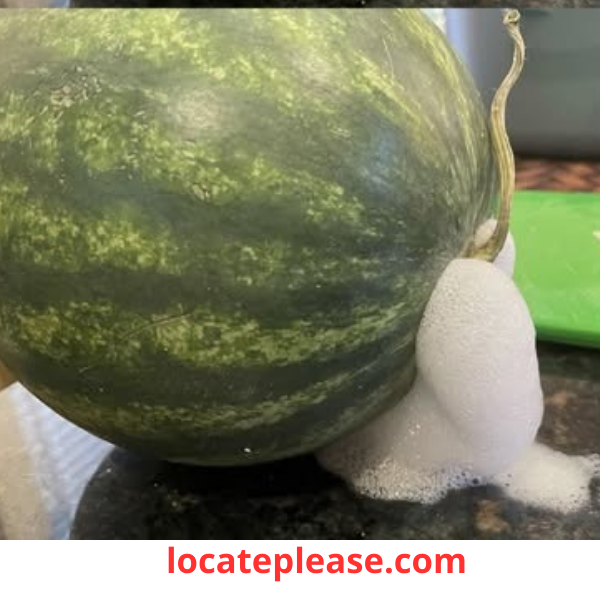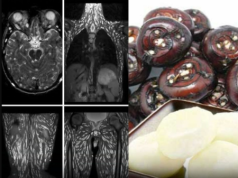Watermelons are a refreshing and hydrating treat, especially during the hot summer months. However, like any fresh produce, they can spoil if not stored or handled properly. Knowing the signs of a bad watermelon can help you avoid foodborne illnesses and ensure you’re only consuming safe, delicious fruit. Here’s what to look for—and what to do if your watermelon starts showing these warning signs.
1. Visible Mold or Fuzzy Spots
What It Looks Like:
White, green, or black fuzzy patches on the rind or exposed flesh.
Why It’s Dangerous:
Mold is a clear sign that harmful bacteria or fungi have taken hold. These microorganisms can produce toxins that spread throughout the fruit—even in areas that appear unaffected.
What to Do:
Discard the entire watermelon immediately. Do not attempt to cut off the moldy part, as spores may have already penetrated deeper into the fruit.
2. Soft or Squishy Spots
What It Looks Like:
Areas of the rind or flesh that feel overly soft, mushy, or sunken.
Why It’s Dangerous:
Soft spots often indicate rot or bacterial growth, which compromises the safety and flavor of the watermelon.
What to Do:
If the soft spots are minor and only on the exterior, you might be able to salvage the interior by cutting away the affected areas. However, if the flesh inside is also soft or discolored, throw it out.
3. Unpleasant or Sour Smell
What It Smells Like:
A sour, fermented, or off-putting odor when you cut into the watermelon.
Why It’s Dangerous:
A foul smell indicates fermentation or spoilage caused by bacteria breaking down the sugars in the fruit.
What to Do:
If the watermelon smells bad, don’t taste it—discard it immediately. Spoiled fruit can cause food poisoning.
4. Discolored or Slimy Flesh
What It Looks Like:
The vibrant red or pink flesh has turned brown, yellow, or gray, or feels slimy to the touch.
Why It’s Dangerous:
Discoloration and slime are clear signs of bacterial growth or oxidation, which can make the fruit unsafe to eat.
What to Do:
Throw away the entire watermelon. Even if only part of the fruit looks discolored, the rest may be contaminated.
5. Shriveled or Wrinkled Rind
What It Looks Like:
The outer rind appears dry, wrinkled, or excessively soft, indicating dehydration or over-ripeness.
Why It’s Dangerous:
While this doesn’t always mean the watermelon is unsafe to eat, it suggests the fruit is past its prime and may harbor bacteria.
What to Do:
Check the flesh inside. If it looks and smells fine, you can still eat it, but if there are any other signs of spoilage, discard the fruit.
6. Excessive Liquid or Leaking Juice
What It Looks Like:
The watermelon is leaking juice or feels overly watery when cut open.
Why It’s Dangerous:
Excessive liquid can indicate that the fruit is breaking down internally, which can lead to bacterial growth.
What to Do:
If the texture seems off or the juice has an unusual smell, toss the watermelon.
7. White or Black Spots Inside the Flesh
What It Looks Like:
Unusual white or black spots on the red flesh of the watermelon.
Why It’s Dangerous:
These spots can indicate fungal infections or contamination, which can make the fruit unsafe to consume.
What to Do:
Discard the watermelon if you notice any strange discolorations inside.
How to Store Watermelon Properly 🥶
Proper storage is key to keeping your watermelon fresh and safe to eat. Follow these tips to extend its shelf life:
- Whole Watermelons:
- Store uncut watermelons at room temperature if you plan to eat them within a week.
- For longer storage, keep them in a cool, dry place or refrigerate them (if space allows).
- Cut Watermelons:
- Wrap cut sections tightly in plastic wrap or store them in an airtight container.
- Refrigerate and consume within 3–5 days.
- Freezing:
- Cut watermelon into cubes or slices, remove the seeds, and freeze on a baking sheet before transferring to a freezer-safe bag. Frozen watermelon is great for smoothies or desserts.
- Avoid Moisture:
- Keep watermelons away from excess moisture, as damp environments can promote mold growth.
Final Thoughts 🍉
Knowing how to identify spoilage in watermelons can save you from unpleasant surprises—or worse, foodborne illness. Always trust your senses: if something looks, smells, or feels off, it’s better to err on the side of caution and discard the fruit. By storing your watermelon properly and checking for these warning signs, you can enjoy this juicy, refreshing treat safely and confidently all season long!










